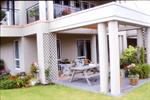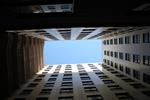
How can the built environment impact on your health?
To properly engage in the field of building biology/health it is important to understand the impact that the surrounding areas and the building itself can have on our health.
Building biology deals with the environment in general and the climate of living. The climate of living can be determined by things such as:
- Installations and furnishings
- Noise and acoustics
- Lighting and colours
- Radiation, avoiding disturbed areas
- Radioactivity
- Space, form and proportion
- Physiology and psychology of living and working
- City planning with biological, ecological, and sociological aspects.
Make a difference to your life and the lives of others
- Learn how the physical characteristics of a building and it's surrounds can affect health
- Learn to change things around a home or workplace, to make it more sympathetic to human well being
- 100 hour, self paced course; taking your understanding of health to another level
Course Structure
There are 8 lessons in this course:
- Environmental Impacts On Buildings
- Chemicals
- Building Surrounds
- Furnishings
- Finishes
- Pesticides & Alternatives
- Managing Interior Environments
- Consulting
 Course Aims
Course Aims
- Explain the impact of the macro-environment (location) on health.
- Explain the impact of building surrounds, including a garden, on the interior environmental conditions.
- Choose interior furnishings which are not likely to damage human health.
- Explain the health implications of using different types of finishes, including sealers, paints, preservatives and stains.
- Explain the health implications of using alternative methods of pest control inside buildings.
- Plan health conscious management systems of interior environments.
WHAT IS BUILDING BIOLOGY?
 Have you ever wondered why most people who work indoors cannot wait to get out of doors as often as possible into the sunlight or among the trees? In past centuries, people worked mostly outside. Life was simpler, and pollution was not the issue it is today. Modern technology has brought many changes. Machines now do much of the hard work and new building materials have been developed. Many of us now have to work in offices. This can be a real health risk. Just think about when you walk into an office, which is the most familiar scene:
Have you ever wondered why most people who work indoors cannot wait to get out of doors as often as possible into the sunlight or among the trees? In past centuries, people worked mostly outside. Life was simpler, and pollution was not the issue it is today. Modern technology has brought many changes. Machines now do much of the hard work and new building materials have been developed. Many of us now have to work in offices. This can be a real health risk. Just think about when you walk into an office, which is the most familiar scene:
- people concerned about being late with red eyes, coughs, sniffs, or yawns, or
- a row of desks occupied by healthy, relaxed, happy people as was would have been found in a traditional agricultural society hundreds of years ago?
It is a fact that people tend to get sick more often inside some buildings than they do inside others. British research by Professor Hedge and Andrew Wilkes in the 1980's provided evidence of common complaints peculiar to people in a ‘sick building’. Frequent symptoms included:
- Upper respiratory tract infections
- Headaches
- Lethargy
- Runny noses
- Sore eyes
- Dry/irritated throats and dry skin.
The environment inside an office can be affected by many things from the toxic qualities of building materials to the quality of air, temperature, and light. Over time, radiation from electrical wiring and appliances can affect the body. Badly arranged furniture can have a psychological effect and may result in considerable bruising or other injuries, for the tired and clumsy.
It does not have to be this way though. There are lots of things about a building that can affect health and over the past couple of decades many different professionals including environmentalists, scientists, architects, and health practitioners have slowly been coming to grips with such issues. An obvious example is the banning of asbestos as a building material because it is now known to cause cancer (mesothelioma).
There are a number of ways in which the situation and site of a building can have a marked impact on:
- The overall comfort of a building
- More importantly, the healthiness of that building.
Environmental factors that can impact upon a building can range from the obvious such as climate through to those with implied threats such as building over a fault line or potential sink hole.
The human ability to sense or dislike an atmosphere is not one to be ignored. Generally, if you feel uncomfortable with a certain situation you are likely to move away from it. If you feel slightly uncomfortable about a particular house or dwelling you will tend to keep away from it or not move in (if it was a potential new home). This is a perfectly normal healthy human response. It can be extrapolated from this that human health and a sense of ease and comfort with our surroundings are closely interconnected.
Why Study This Course?
This course provides students with insight into the many ways that buildings can impact upon the health of their occupants.
Here the emphasis is on the environment rather than the materials used to construct the buildings, which is the focus of our Healthy Buildings I course.
Use what you learn here and apply it to your home, you workplace, or other buildings. Make a difference to your own health and that of others.
This course can enhance existing building and design knowledge or serve as a foundation towards other studies and learning packages.
Use your knowledge in roles which entail the planning, design and construction of buildings as well as inspections of existing buildings for health risks.
Want to learn more? Enrol now!!